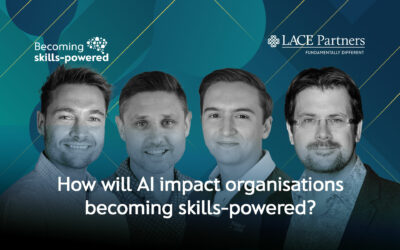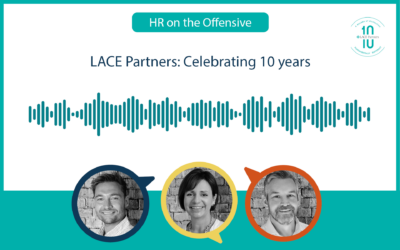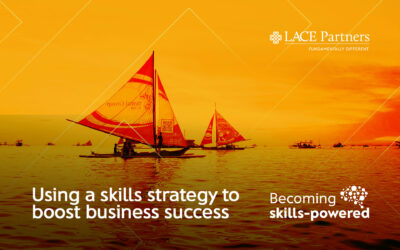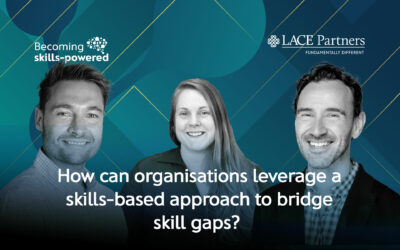As we enter 2024, we reflect on the insights gathered from our networks and clients alike. Our People and Workforce Analytics team were invited to attend the Workforce Planning Institute conference where they were engaged in lively debates about workforce changes and challenges that we are likely to encounter in 2024 and beyond. The focus of the conference was on ‘Driving progress, connecting professionals and finding solutions together’ and in today’s blog we sat down with Nancy Allen and Pavan Bilkhoo from our team to find out more on some of the critical thinking that was debated.
Strategy at the centre
‘Strategic’ is back in strategic workforce planning (SWP). Finally, organisations have moved beyond the operational headcount planning and are starting to use data to build a picture of how the workforce deliver business outcomes. With the sheer amount of data available internally and externally, conference attendees shared that workforce planning is enabling broader conversations about location strategy, talent mobility and strategic partnerships.
So what? What do we recommend?
- Data is a hygiene factor so the workforce plan must answer questions about how to deliver strategic outcomes in the short and long term to make the plan useful and tangible rather than an HR exercise.
- Look beyond an HR process. Encouraging business leadership to incorporate workforce requirements to deliver their outcomes through the planning process can be an easy way for business to own the workforce plan.
Complexity is hindering progress
Whilst SWP has been overwhelmingly simplified thanks to technology and data, the level of disruption due to geo-political changes and the pace of technological change are making the task more complex. Business leaders are still highly engaged with talent strategies, particularly as we enter another year of talent shortages; however, beyond the short-term requirements, sharing an accurate understanding the evolving resourcing and skill requirements remains a challenge.
So what? What do we recommend?
- Embrace technology to navigate the complex environment through anticipating future skill needs so that you can focus on strategies to ‘bridge the gap’ effectively through talent acquisition, skill building and mobility.
- SWP must be responsive. Business models may change in response to geo-political risks impacting the type of workforce the organisation needs. Clear governance must be in place to iterate the SWP as a result.
Skills-based SWP is gaining momentum
Conference attendees were excited to hear more about how taking a skills lens to SWP can deliver a dynamic plan that can take action in the face of changing business priorities and technological advancements. We mentioned this in last week’s prediction piece and expect 2024 to see this becoming a more prevalent topic than ever before. Despite technology being in place, there is still a lack of understanding of the current skills profiles – usually due to multiple places to capture employee skills and lack of integrated approach. Some SWP teams report that they are ahead of colleagues in HR taking a skills lens leading to a disconnect in the overall talent strategy.
So what? What do we recommend?
- A central skills strategy should be developed to illustrate a holistic picture of how skills-based talent practices will enable the strategic workforce plan for example, upskilling, reskilling and project-based work being prioritised for certain scare skill areas.
- Cultural shifts in how we think about workforce skills as a shared commodity across the business rather than owned by a specific area mean that change cannot happen overnight. Taking a culture change approach alongside introducing skills-based thinking will create results
What’s next: GenAI taking SWP to the next level
Conference attendees anticipated lots of discussion on GenAI and they were not disappointed. There are two key areas:
- Changing our work: GenAI will automate part of each and every job that exists. Whilst this may not have wholescale change to our day-to-day jobs, it will continue to make humans more productive and open up capacity to focus on upskilling / reskilling as well as take up opportunities to flow to other project-based work. Incorporating this into the SWP can be a powerful, tangible results aligned to taking advantage of skills-based thinking
- Supercharging the process: GenAI’s ability to join less structured data sources can enable SWP to take internal and external data more quickly as well as integrating the plan to the talent process, from talent identification and assessments, career and learning pathways and employee needs. To do this HR will need to connect data and processes to enable this holistic thinking.
The conference was a fantastic opportunity to bring together what we hear from clients and hear from vendors on new thinking, stories and innovative products. We can’t wait to share more of our work and thought leadership on transforming workforces in 2024.
If you’d like to talk to us about your thoughts on your current strategic workforce planning approaches, fill in the form and let us know what you’d like to talk about in the comments section.






